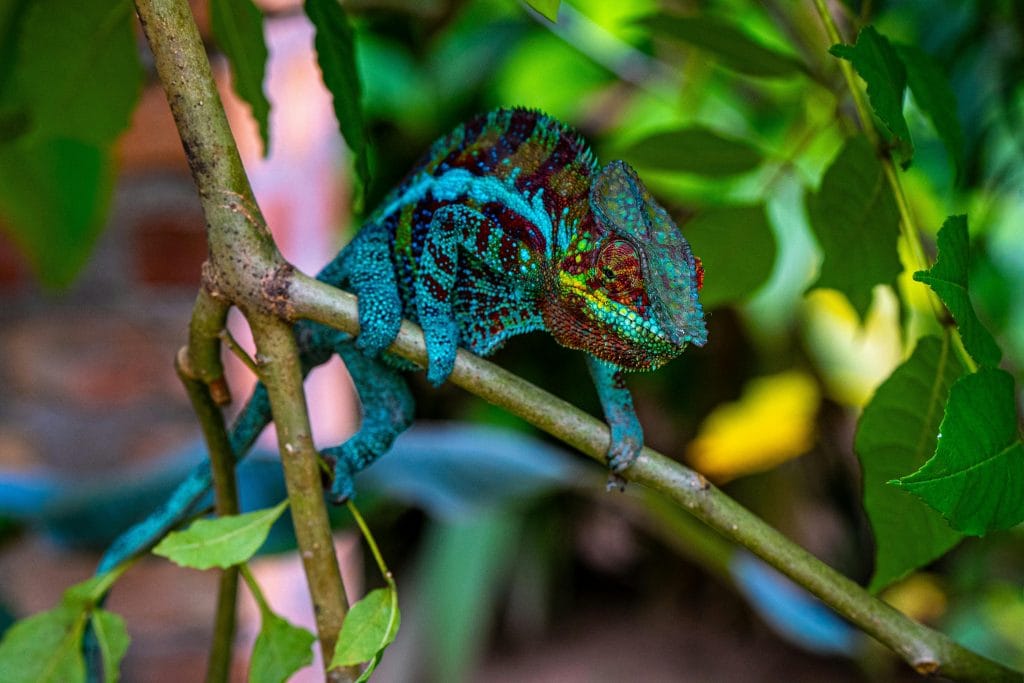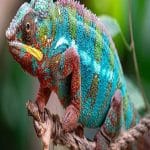
Image Credits – Hema
Chameleons are some of nature’s most fascinating reptiles—well-known for their color-changing abilities, independently moving eyes, and long, sticky tongues used to catch prey. But beyond their physical quirks lies a world of scientific understanding that tells us how chameleons fit into the grand tree of life. Understanding the scientific classification of chameleons helps reveal their evolutionary relationships and unique adaptations that make them stand out in the animal kingdom.
Scientific Classification of chameleon : A Perfect Guide

What is scientific classification?
Scientific classification, or taxonomy, is the method by which biologists organize living organisms into a hierarchical structure based on shared characteristics. This classification helps in understanding relationships, evolution, and ecological roles. The main ranks in this system are:
Kingdom, Phylum, Class, Order, Family, Genus, and Species.
Let’s now explore how chameleons are classified.
Scientific Classification of Chameleons
- Kingdom: Animalia
Chameleons belong to the Animal Kingdom because they are multicellular, eukaryotic organisms that rely on other organisms for food. - Phylum: Chordata
They fall under the phylum Chordata, meaning they possess a notochord (a primitive backbone) at some stage of their life cycle. - Class: Reptilia
Chameleons are cold-blooded, have scaly skin, and lay eggs—traits common to all reptiles. - Order: Squamata
This order includes lizards and snakes. Chameleons are distinguished from other members by their unique morphology and behavior. - Family: Chamaeleonidae
This is the dedicated family for chameleons, encompassing around 200 species. They are mostly arboreal and found in warm climates like Africa and Madagascar. - Genus: Chamaeleo (One of several genera)
Not all, but many chameleons belong to the genus Chamaeleo, which includes the more well-known species like the Common Chameleon (Chamaeleo chamaeleon). - Species: Varies by Type
For example, the Panther Chameleon is Furcifer pardalis, while the Veiled Chameleon is Chamaeleo calyptratus. Each species has adapted to specific environments and displays distinct colors, patterns, and sizes.
Why Does Scientific Classification Matter?
Scientific classification isn’t just a formality. It serves many practical purposes:
- Understanding Evolutionary Relationships:
Classification shows how chameleons are related to other reptiles and even birds or mammals at a deeper evolutionary level. - Conservation Efforts:
Knowing the classification helps in identifying endangered species, understanding their habitats, and crafting targeted conservation plans. - Scientific Communication:
Using a universal taxonomy allows scientists from different countries and languages to accurately identify and study organisms without confusion.
Fascinating Adaptations Linked to Their Classification
Because chameleons fall within the Squamata order and Chamaeleonidae family, they exhibit features that are not only unique but also highly specialized for survival:
- Zygodactylous Feet: Their feet are specially adapted for gripping branches.
- Projectile Tongue: Can extend twice the length of their body to catch prey.
- 360° Vision: Each eye can move independently, allowing a complete view of their surroundings.
- Color Change: Used for camouflage, communication, and temperature regulation—enabled by specialized skin cells called iridophores.
These adaptations reinforce the evolutionary success of chameleons within their niche environments.
Chameleons are not just exotic lizards; they are a marvel of evolutionary biology. Their scientific classification places them among reptiles but highlights a family (Chamaeleonidae) unlike any other. Understanding their taxonomy allows us to appreciate not just where they fit on the tree of life, but also how millions of years of evolution have sculpted them into the incredible creatures they are today. Do you have a favorite chameleon species? Or have you ever seen one change color in real life? Share your thoughts or stories in the comments below!
Frequently Asked Questions
How does the scientific classification of chameleon help in species identification?
The scientific classification of chameleon allows researchers and scientists to accurately identify each chameleon species based on shared characteristics. For example, species like the Panther Chameleon (Furcifer pardalis) and Veiled Chameleon (Chamaeleo calyptratus) are placed in different genera because of distinct traits. Taxonomy eliminates confusion and ensures every species has a unique identity, which is especially useful for conservation, breeding, and ecological studies.
What is the scientific classification of chameleon and how is it structured?
The scientific classification of chameleon is a structured way to categorize these unique reptiles based on their evolutionary traits and biological characteristics. Chameleons belong to the Kingdom Animalia, indicating they are animals. They are part of the Phylum Chordata because they have a backbone. Within this phylum, they are classified under the Class Reptilia, which includes all reptiles. They fall into the Order Squamata, shared with lizards and snakes. Chameleons are members of the Family Chamaeleonidae, which contains all known chameleon species.
Why is the scientific classification of chameleon important in biology and conservation?
The scientific classification of chameleon plays a vital role in both biological research and conservation efforts. By classifying chameleons correctly, scientists can better understand their unique traits, evolutionary history, and ecological roles. For example, knowing the specific genus and species helps identify habitat requirements, dietary needs, and reproductive behavior. This information is crucial when protecting endangered chameleon species and ensuring they thrive in the wild or captivity.







